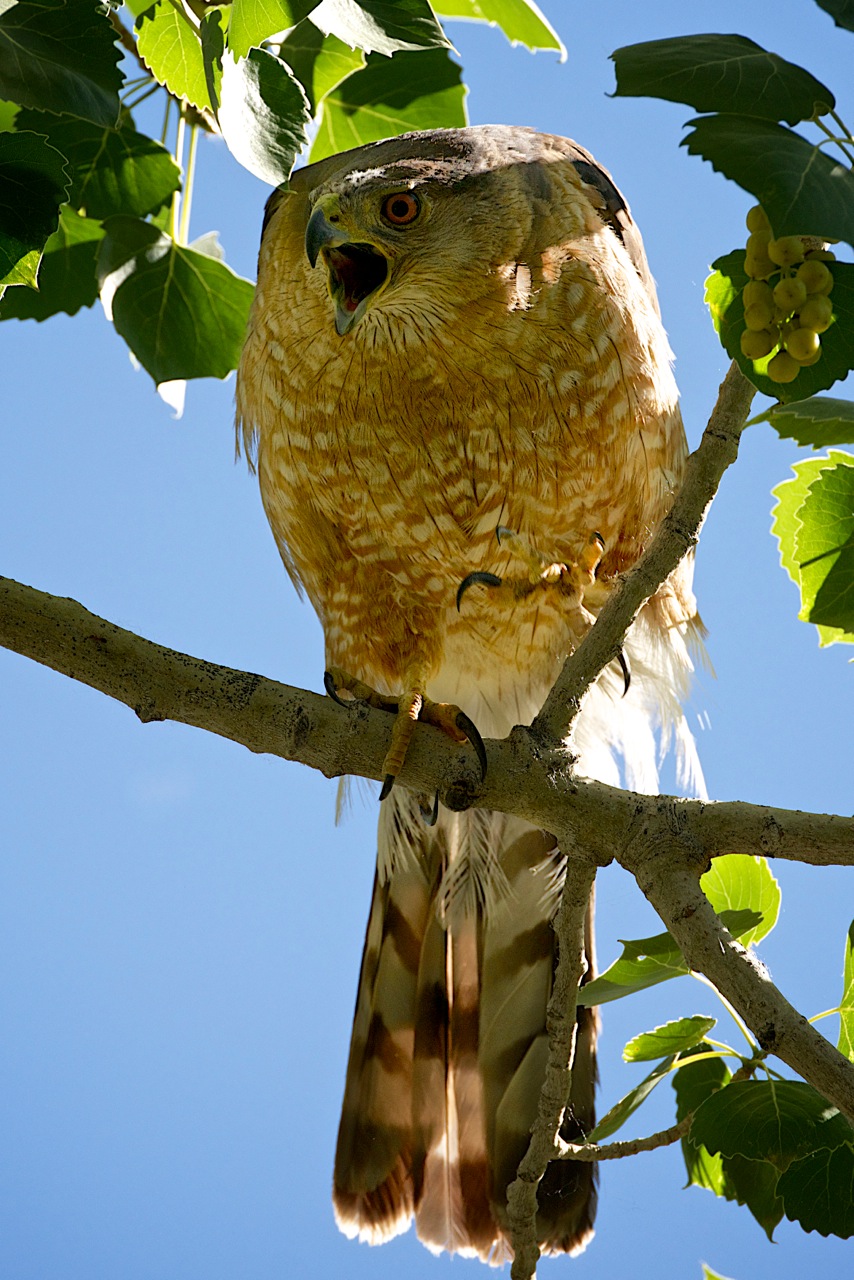You don’t need a Ph.D in order to join one of the most important long-term research projects in the state, but you do need a really good pair of hiking boots.
The Raptor Inventory Nest Survey (RINS) and the U.S. Bureau of Land Management (BLM) are looking for properly attired “citizen scientists” to help them keep track of raptors’ nests in eastern Utah.
Before they set off on their field work later this season, the BLM’s Moab Field Office and RINS Director Robyn MacDuff will be hosting a free volunteer training session on Monday, Feb. 2.
MacDuff will be there to help volunteers identify species they might not be familiar with, while offering them tips about how they can safely monitor birds of prey without harassing them.
“Robyn is a wealth of knowledge,” BLM wildlife biologist Pam Riddle said. “We don’t want to disturb the birds, so she teaches you the best way to go about it.”
In addition to a three-hour training session from 1 p.m. to 4 p.m. that day, volunteers will typically spend another four hours in the field with someone from RINS. Beyond that time, the BLM says that they should be prepared to spend at least two days hiking out in the field each month between February and June.
“The best time to figure out where raptors are is when they’re breeding and active,” Riddle said.
Each volunteer will be assigned to specific areas, and Riddle said their field work will be tailored toward their interests.
“It’s kind of individualized to what they want to do,” she said.
According to Riddle, the information they gather will ultimately guide the agency as it reviews proposals for projects on BLM-administered lands.
“This helps me out a lot, because I can target areas,” she said.
MacDuff said the data gives her Sandy-based group a clearer understanding of raptor populations around the state.
“It’s just to get a better idea of how the birds are doing,” she said.
Citizens, in turn, become empowered to help federal, state and local land managers make better decisions that protect and conserve Utah’s populations of eagles, hawks, owls, ospreys and falcons, the group says.
In Grand County, Riddle’s office uses the data that RINS volunteers collect as it reviews proposals that deal with everything from new mountain biking trails to new oil wells.
“We have to do surveys anyway, but this gives us a heads-up,” Riddle said.
In other parts of Utah, federal land managers have factored the data into their decisions on wind turbine projects and all-terrain vehicle races, among other things. In one particular case, they made adjustments along a planned Rocky Mountain Power transmission line corridor to avoid important nesting areas.
The group’s volunteer-driven monitoring work has been expanding ever since it was formally created in 2001. Three years ago, it reached Grand County, and it has since built up a team of about 20 local volunteers, including members of the Moab Bird Club.
“The people in Moab are great – they’re really fun to work with,” MacDuff said.
Last year alone, the organization almost doubled its base of volunteers around Utah, and with more people on the ground, it’s documenting more and more nesting sites from Moab to the Utah-Nevada state line. According to MacDuff, volunteers around the state are now adding more than 400 newly discovered nests in an average year.
In Grand County, some of the highest densities of raptors can be spotted in the Cisco Desert, which is located about halfway between Moab and Grand Junction, Colorado.
“I see the most activity in the Cisco Desert,” Riddle said. “It’s kind of a badlands out there, and it’s amazing, the kinds of raptors you’ll see.”
The vast area is largely unpopulated — unless you count the numbers of prairie dogs and other critters, which are most likely the main draw for the hungry raptors.
“It’s probably a good hunting ground,” she said.
Volunteer training for raptor count set for Feb. 2 at BLM office
When: Monday, Feb. 2 from 1 p.m. to 4 p.m.
Where: U.S. Bureau of Land Management (BLM) Moab Field Office, 82 E. Dogwood
Cost: Free. To register, email info@rins.org. You can also call 801-554-0807 for more information.
If you would like to volunteer for the survey and attend the training session, you can send an email to info@rins.org. For more information about the Raptor Inventory Nest Survey, go to www.rins.org, or call Robyn MacDuff at 801-554-0807.
The BLM suggests that each volunteer should have a pair of binoculars, a GPS unit, a digital camera and an email address.




